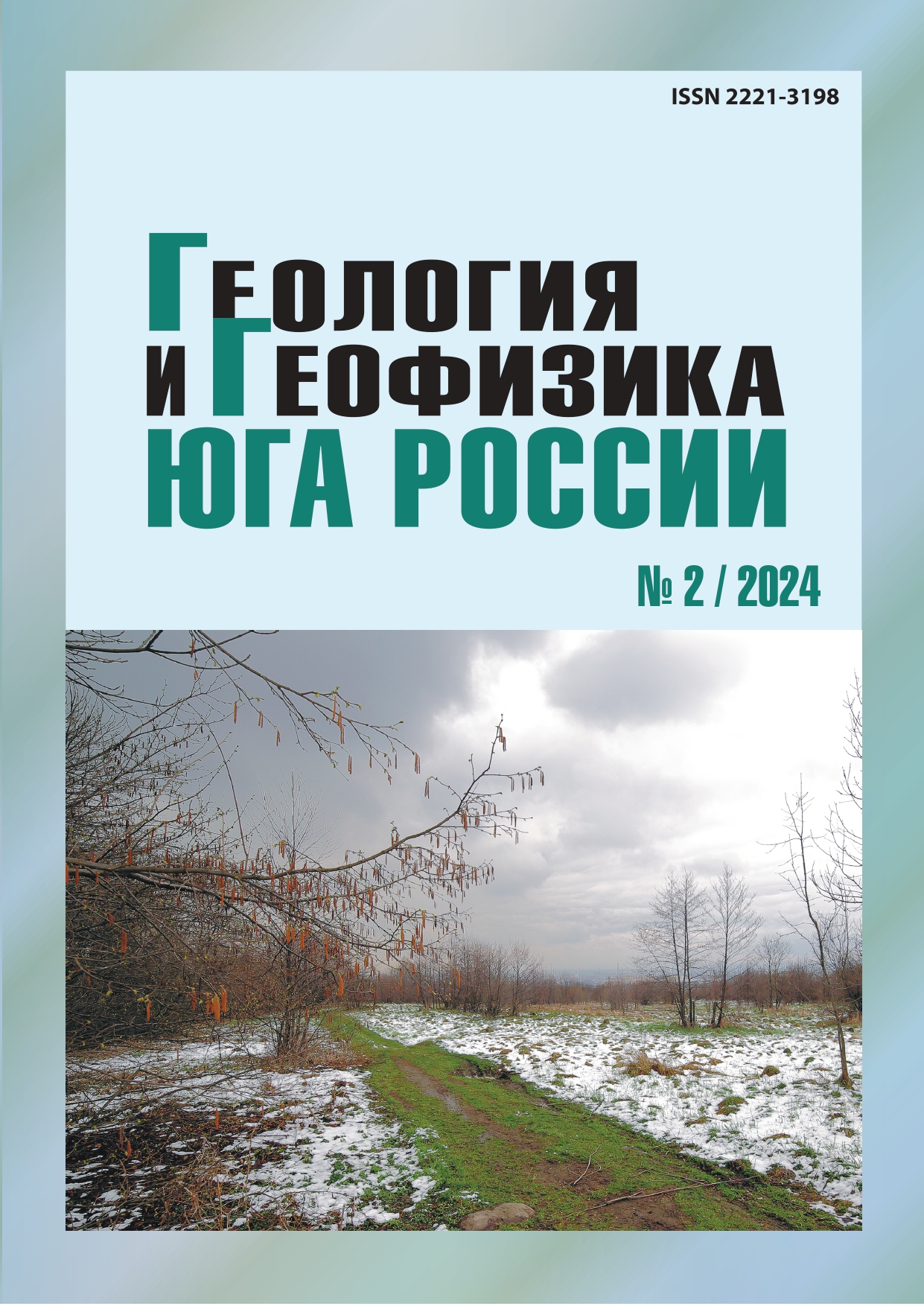Assessment of hydrogeological indicators of the formation of the stress state of the Earth’s crust on the territory of Armenia
Abstract
Relevance. The study of geodynamic processes of the Earth’s crust in Armenia involves a wide range of geophysical fields such as seismic, hydrogeodynamic, geochemical, deformational, and tectonic. The monitoring network includes 14 hydrogeodynamic wells drilled in seismotectonic zones and mineral water sources in Central Armenia. Hydrogeological indicators and the chemical composition of underground waters are compared with the current seismicity of the region to indicate the formation of stress-deformed state of the Earth’s crust. The research aims to analyze seismicity, create maps of spatial-temporal seismic distribution, and study changes in the stress-deformed state of the region based on hydrogeological variations. The research task is to determine characteristic variations in hydrogeochemical and hydrogeodynamic indicators and study precursor effects related to the seismotectonic process. Methods. Application of hydrogeological monitoring method based on groundwater’s response to changes in stress-deformed state of the region. Statistical methods used to process temporal variations of underground waters and chemical components of mineral waters. Consideration of the sensitivity of observation points’ locations. Results. Analysis of seismicity in Armenia indicates that seismic sources are associated with deep faults like the Yerevan, Ararat-Sevan, and Pambak-Sevan faults. Concentration of seismic sources in the northern region, the Pre-Yerevan fault zone, and the eastern coast of Lake Sevan is observed. Hydrogeodynamic effects preceding earthquakes are identified through variations in underground waters in monitoring wells and chemical components of mineral water sources. The constructed map of stress-deformed state of the Earth’s crust in Armenia reflects the deformation structure in compression form in Gyumri, Yerevan, and Sevan tectonic blocks. In the listed blocks, anomalous changes in hydrogeological parameters and CO2 dissolved in mineral waters were obtained.


